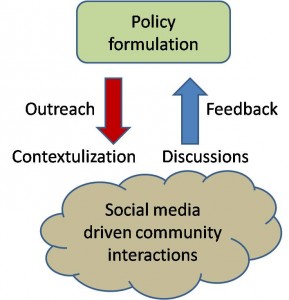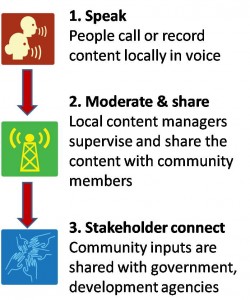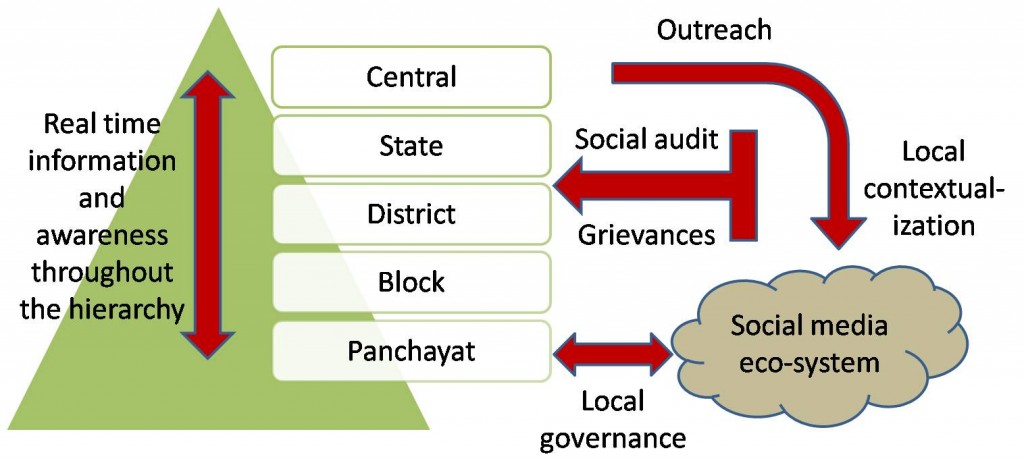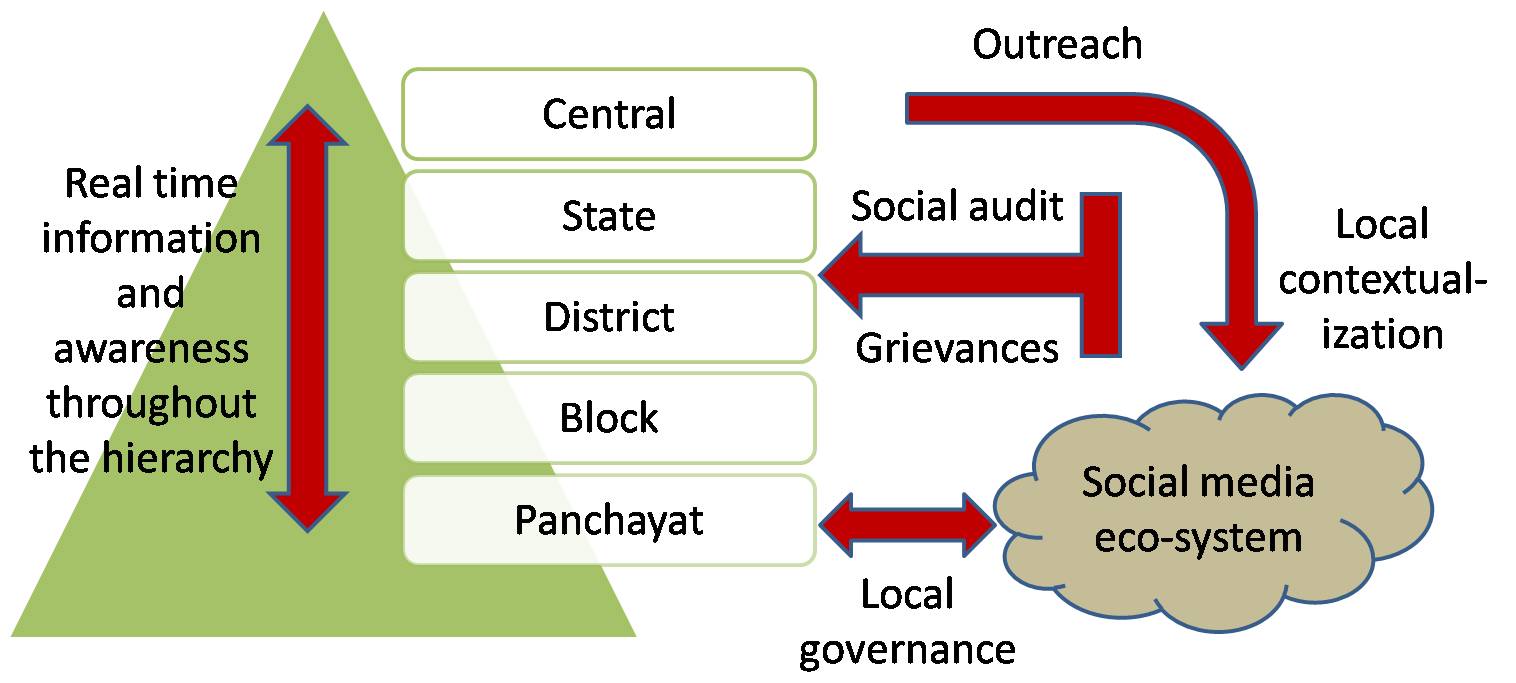Download our whitepaper on how social media can help in governance at the bottom of the pyramid: Social media and governance
The relevance of social media for governance
What is so special about social media?
We believe that social media has certain inherent properties that make it very interesting:
– Opportunity for self expression: Social media websites such as Facebook and Twitter provide immense opportunity for anybody to put out their thoughts and opinion, and make themselves heard across the world
– Shared context: Social relations capture the embedding of social media into the real world, and make shared information contextual to the recipients. Information transforms as it perpetuates along social links, gaining context and becoming more and more relevant as it progresses
– Self organizing and correcting: Simple communication primitives that allow people to easily share information, strive for validation, and connect it to the real world, help people get organized and put out coherent voices to relevant stakeholders
This degree of social connectivity, opportunity for self-expression, and an open medium to debate and engage is unprecedented in human history.
So what this mean for governance? Governance cannot happen without a citizen connect, and social media provides an ideal vehicle for this.
Citizens being able to share information with a common context are able to help each other understand the implications of current events and government schemes.
Self expression provides an opportunity to them to express their opinion.
And the self-organizing properties of social media help others comment and discuss the topic, and come up with coordinate and articulate voices that represent the views of the citizens.
Plus the fact that more than a billion users are already on Facebook provides a ready medium for citizen-government engagement.

Social media for the BoP?
Rural and low-income urban populations are not on Internet based social media platforms such as Facebook ad Twitter. Poor text literary coupled with sparse Internet connectivity and the inability to afford smartphones are some factors that inhibit the reach of social media to the bottom of the pyramid population.
How then can Internet-like social media eco-systems be created for this demography?
The answer probably lies in the use of voice and video. Being able to communicate in voice automatically jumps literacy barriers, and the wide proliferation of mobile phones even at the BoP provides a ready medium.
Several pilots using IVR based systems to enable voice-based communication, the success of community radio , and experiments on community video have demonstrated the potential in using voice and video to build the equivalent of a Facebook for rural India.
These forums are typically moderated, and have an exclusive focus on local content production and consumption.

Building an institutional connect between social media and government departments
We can consider a two-way flow of information between citizen driven social media platforms, and the government hierarchy:
– From the government towards the social media eco-system: This would typically consist of announcements, details of government schemes, and new initiatives. The social media eco-system helps spread the information and contextualize it for different agents in the eco-system
– From the social media eco-system towards the government hierarchy: This would consist of feedback from the citizens about the performance of government schemes, what is working and what is not, and grievances that require some action on behalf of the government.
Problems
Several issues currently hinder this connect from operating effectively:
– Social media is not recognized as an official outreach channel: Most government departments do not use social media for outreach, especially new experiments such as voice-based social media platforms operating in rural areas. Empanelled outreach agencies typically consist of traditional mass media such as radio, television, print, and cinema, which are not interactive and do not allow for any contextualization
– There is a lack of understanding of how information messaging works in rural areas: Centrally produced content lacks local context and is hence less effective in influencing the behavior of rural populations towards up-take of government schemes or best-practices in livelihood and other activities. Social media has the tremendous potential of contextualizing information to make it locally relevant, but the notion of facilitating local content creation based on guidelines does not exist
– Giving a ear to social media conversations: Very often social media conversations are ignored as meaningless chatter or as lacking in credibility. Even moderated and verified citizen inputs are however rarely able to reach the concerned authorities because plugs into the government hierarchy do not exist that can listen to citizen inputs and respond. The equivalent of an RTI process is absent when it comes to government engagement with social media.
Recommendations
The following steps can therefore be catalytic in initiating citizen-government engagement using social media:
– Use social media channels for outreach and citizen connect at all levels — Central, State, Local — by mandating that government departments should look beyond traditional media for outreach
– Pioneer a novel outreach process by handing out ONLY message and contextualization guidelines to agencies operating social media platforms: Marking a departure from conventional thinking of producing content centrally and distributing it, move towards facilitating distributed content generation and distribution, while giving guidelines on the messages the content should carry
– Designate social media response personnel in each government department at different levels: Just like a grievance cell, a social media cell should listen to community audit reports and demands brought in through social media channels. Further, independent agencies can be engaged to verify the social media messages.

Local governance aided through social media
Other than integrating social media eco-systems with government departments, social media can be used for more inclusive local governance. This includes the following:
– Create deliberations among communities on local issues such as budgeting, resource allocation, running education and health institutions, and management of the commons
– Run polls to collect inputs around building consensus on local issues
– Hold local institutions directly accountable to the communities by publishing performance reports and meeting minutes in text or voice
– Bring transparency to local budgeting and fund allocation



